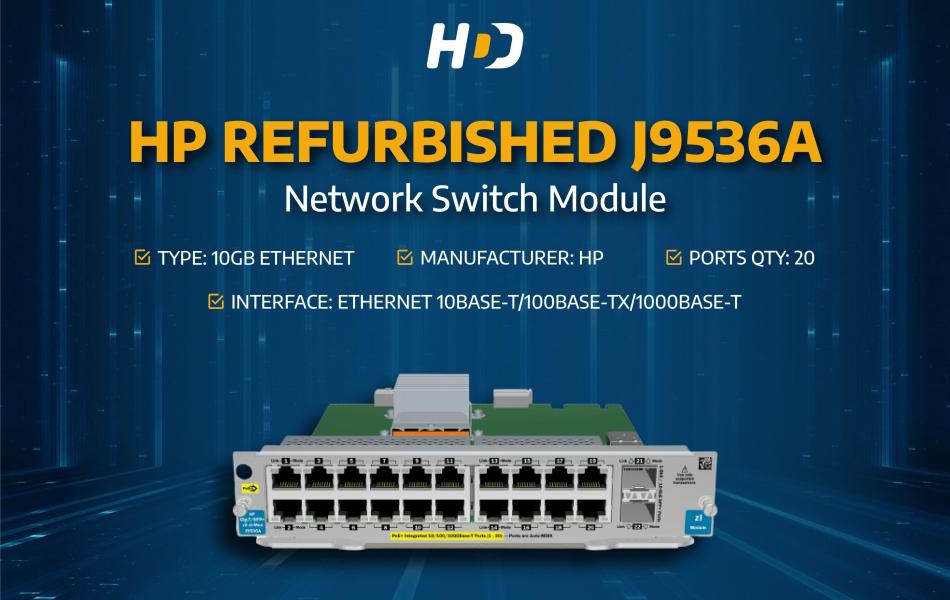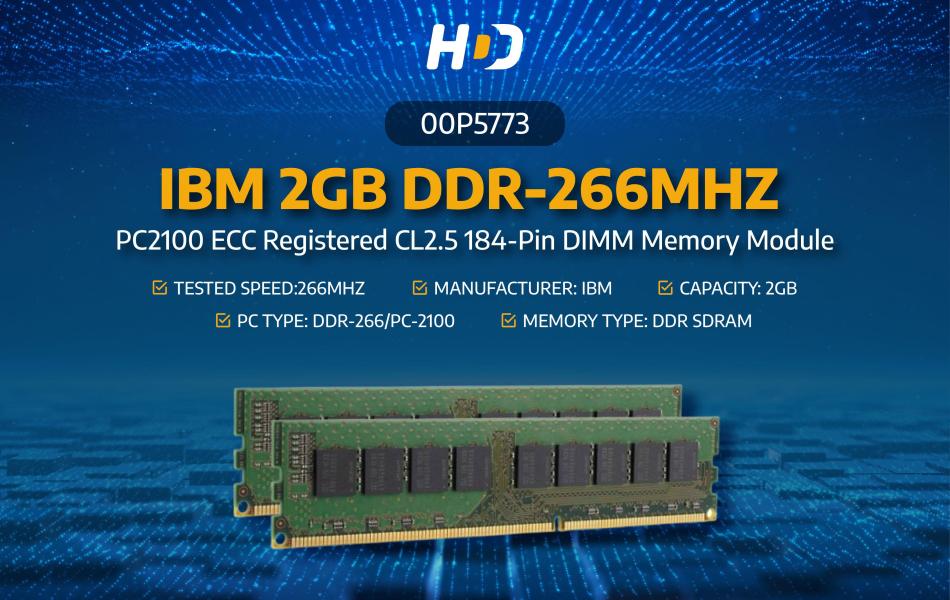In a world where technology permeates our daily lives, we are faced with numerous decisions that shape our connected experiences. Choosing the ideal streaming service, the newest smart device, or even thinking about integrating a Network Switch Module, each choice has a significant impact on our network infrastructure. Network Switch Modules serve as the backbone of modern networks, facilitating seamless communication, efficient data transfer, and robust connectivity. By comprehending the nuances and advantages of Network Switch Modules, we can maximize the functionality of our network infrastructure and lay a strong foundation for expansion and innovation in the future. So, let's embark on a journey to explore the world of Network Switch Modules and unravel their significance in our interconnected world.
I. Demystifying Network Switch Modules
Understanding the Basics: What are Network Switch Modules?
Network switch modules are compact devices designed to be inserted into compatible network switches or routers, expanding their capabilities and functionality. These modules typically provide additional ports and features to enhance network connectivity and performance. Unlike standalone switches, network switch modules are designed to be installed within a chassis, offering greater flexibility and scalability in network design.
The Significance of Network Switch Modules in Network Architecture
Network switch modules play a vital role in data transmission and routing within a network infrastructure. They enable the efficient flow of data packets between devices, ensuring optimal network performance. These modules are essential for creating scalable and reliable networks, allowing organizations to meet the increasing demands of modern applications and services.
Advantages and Benefits of Network Switch Modules Network
Switch modules offer numerous advantages that contribute to the overall efficiency and effectiveness of a network. These benefits include:
- Improved Network Efficiency and Speed:
- Enhanced data transfer rates and reduced latency for faster communication
- Efficient handling of network traffic, ensuring smooth operations - Enhanced Network Security and Access Control:
- Advanced security features such as access control lists (ACLs) and VLANs
- Segmentation of network traffic to prevent unauthorized access - Simplified Network Management and Configuration:
- Centralized control and configuration through a single management interface
- Streamlined provisioning and monitoring of network devices - Scalability and Flexibility for Growing Network Demands:
- Expandable port capacity to accommodate increasing network requirements
- Compatibility with different networking protocols and standards
II. Introducing the HP Network Switch Module (J9536A)
A. An Overview of the J9536A Model
Introduction to the HP Network Switch Module (J9536A)
J9536A model of the HP Network Switch Module is a versatile and high-performance network switch module. It's designed to improve network connectivity and offer trustworthy data transmission capacities. This module offers a variety of advanced features to support varied network settings and is compatible with different HP networking systems.
Hardware Specifications and Form Factor
The HP Network Switch Module (J9536A) features a compact and modular design, making it suitable for use in various networking devices and configurations. It offers multiple ports for seamless connectivity and supports different network interfaces, including Ethernet and fiber optic connections. The module is designed to be easily installed and integrated into existing network infrastructures.
Compatibility and Integration with HP Networking Solutions
The J9536A module is specifically designed to work seamlessly with HP networking solutions, ensuring optimal compatibility and integration. It enables effective data movement and communication inside the network and is simple to integrate into HP switches, routers, and other networking equipment. The deployment of the network will be simple and hassle-free thanks to this interoperability.
B. Key Features and Specifications of the HP Network Switch Module
Port Types and Density of the J9536A Module
The J9536A module provides a variety of connection types, including Ethernet and fiber optic connectors, to provide network connectivity flexibility and adaptability. It has a high port density, enabling numerous devices to connect at once and send data. For network environments with high data traffic and demanding applications, this port density is very helpful.
Layered Support and Compatibility with Networking Protocols
The J9536A module supports various networking protocols and offers layered support, enabling efficient communication between different network layers. It ensures compatibility with industry-standard protocols, facilitating seamless integration with other network devices and components. This compatibility ensures smooth data transmission and interoperability within the network.
Advanced Features such as VLAN, QoS, and Spanning Tree Protocol
The J9536A module is equipped with advanced features that enhance network performance and management. It supports Virtual LAN (VLAN) technology, allowing for network segmentation and improved security. Quality of Service (QoS) capabilities enable prioritization of network traffic, ensuring smooth data transfer for critical applications. The module also supports the Spanning Tree Protocol (STP), which provides redundancy and prevents network loops for enhanced reliability.
Power Efficiency and Environmental Considerations
The J9536A module is designed with power efficiency in mind, optimizing energy consumption without compromising performance. It incorporates power-saving features and mechanisms to reduce power consumption during periods of low network activity. This energy-efficient design not only helps reduce operational costs but also contributes to more sustainable and environmentally-friendly network infrastructure.
C. Use Cases and Deployment Scenarios for the J9536A Module
Small to Medium-sized Enterprise Networks
The J9536A module is well-suited for small to medium-sized enterprise networks, providing reliable and scalable network connectivity. It can accommodate the growing demands of these networks, offering the flexibility to add or upgrade ports as needed. The advanced features of the module ensure efficient network management and enhanced performance for a seamless networking experience.
Data Centers and Server Rooms
In the data center and server room environments, the J9536A module plays a crucial role in supporting high-density network connections. Its port density and advanced features allow for efficient data transfer and optimized network performance, ensuring the smooth operation of critical applications and services. The module's compatibility with fiber optic connections makes it suitable for high-speed data transmission in these demanding environments.
Branch Offices and Remote Locations
For branch offices and remote locations, the J9536A module provides a compact and reliable solution for network connectivity. Its modular design allows for easy installation and integration into existing network setups. The module's advanced features, such as VLAN and QoS, help optimize network traffic and ensure seamless connectivity for branch office employees and remote workers.
Virtualized Environments and Cloud Infrastructure
In virtualized environments and cloud infrastructure, the J9536A module offers the necessary flexibility and scalability to support dynamic and rapidly changing network requirements. Its advanced features, such as VLAN and QoS, enable efficient network segmentation and resource allocation. The module's compatibility with industry-standard protocols ensures seamless integration with virtualization platforms and cloud management systems.
III. Advantages of Network Switch Modules over Traditional Switches
A. Scalability and Flexibility: Empowering Network Expansion
Network switch modules offer a modular design that allows for easy scalability and expansion of network capabilities. Additional ports can be added or upgraded without the need for replacing the entire switch, providing a cost-effective solution for growing network demands. This scalability enables organizations to adapt to evolving networking requirements and accommodate increased data traffic.
Ability to Accommodate Changing Network Requirements
Network switch modules offer the flexibility to support different network configurations and requirements. With modular designs, organizations can easily configure and reconfigure their network infrastructure to meet changing business needs. This flexibility ensures that the network remains agile and adaptable to new technologies, applications, and connectivity options.
Simplified Network Upgrades without Disrupting Operations
Upgrading network switches can be a challenging task, especially in environments where network downtime is not acceptable. Network switch modules allow for non-disruptive upgrades, as they can be added or replaced without impacting the entire network. This capability minimizes downtime and ensures continuous network availability during the upgrade process.
B. Simplified Network Management: Streamlining Operations
Network switch modules offer centralized management capabilities, simplifying network administration and configuration. With a single management interface, network administrators can easily monitor and control the entire network infrastructure. This centralized control streamlines network operations reduces complexity, and improves efficiency.
Ease of Network Monitoring and Troubleshooting
Network switch modules provide enhanced monitoring and troubleshooting capabilities. Advanced monitoring tools and features allow network administrators to gain insights into network performance, identify potential bottlenecks, and proactively address issues. This visibility helps ensure optimal network performance and minimizes downtime.
Automated Provisioning and Software Updates
Network switch modules often include automation features that simplify provisioning and software updates. These modules can be integrated with network management systems to automate tasks such as configuration deployment and firmware updates. This automation reduces the risk of human error, speeds up deployment processes, and ensures consistent configuration across the network.
C. Enhanced Performance and Reliability: Ensuring Seamless Connectivity
Network switch modules offer high-performance features and reliability enhancements. They provide higher bandwidth and throughput, enabling faster data transfer and improved network response times. Additionally, these modules incorporate redundancy mechanisms to ensure high availability and minimize the impact of hardware failures on network operations.
Improved Traffic Segmentation and Quality of Service (QoS)
Network switch modules support advanced features like VLANs and Quality of Service (QoS) to optimize network traffic. VLANs enable network segmentation, enhancing security and isolating traffic between different network segments. QoS allows prioritization of network traffic, ensuring that critical applications receive the necessary bandwidth and minimizing latency for time-sensitive applications.
Redundancy and Resiliency Features for High Availability
Network switch modules often include redundancy features such as link aggregation and redundant power supplies. These features increase network resilience by providing alternate paths for data transfer and ensuring uninterrupted operation in case of component failures. Redundancy mechanisms enhance network availability and minimize the risk of downtime.
IV. Choosing the Right Network Switch Module for Your Network
A. Considerations for Selecting the Ideal Network Switch Module
When selecting a network switch module for your network, several factors should be taken into consideration:
- Network Requirements: Assess your network's specific needs, such as the number of users, data traffic volume, and required bandwidth. This will help determine the appropriate port density, data transfer speeds, and performance capabilities needed from the switch module.
- Scalability: Consider the future growth and expansion plans of your network. Choose a switch module that allows for easy scalability and supports additional ports or modules as your network requirements evolve.
- Advanced Features: Identify the specific features and capabilities required for your network environment. Consider factors such as VLAN support, QoS capabilities, security features, and management options. Assessing these requirements will ensure that the chosen switch module can meet the demands of your network.
B. Compatibility and Integration with Existing Infrastructure
When selecting a network switch module, it is crucial to consider its compatibility and integration with your existing network infrastructure. Factors to consider include:
- Network Architecture: Determine whether the switch module aligns with your network architecture, such as the use of a specific networking standard or protocol. Ensure that the module can seamlessly integrate with your current network components, such as routers, switches, and servers.
- Management and Monitoring: Evaluate the compatibility of the switch module with your existing network management systems. Ensure that it can be easily managed and monitored through your preferred network management platform.
- Interoperability: Verify that the switch module can communicate and function properly with other network devices, such as firewalls, load balancers, and access points. This ensures smooth interoperability and eliminates potential compatibility issues.
C. Future-Proofing Your Network with Scalable Switching Solutions
Investing in a scalable network switch module is essential for future-proofing your network infrastructure. Consider the following factors:
- Modular Design: Opt for a switch module that offers a modular design, allowing for easy expansion and upgrades. This flexibility ensures that your network can accommodate future growth and evolving technologies without the need for significant infrastructure changes.
- Compatibility with Emerging Technologies: Look for a switch module that supports emerging technologies such as virtualization, cloud computing, and Software-Defined Networking (SDN). This ensures that your network can adapt to new trends and technologies in the future.
- Vendor Support and Roadmap: Evaluate the vendor's commitment to innovation and their product roadmap. Choose a switch module from a reputable vendor known for continuous development and support, as this ensures long-term compatibility and access to new features and advancements.
By carefully considering these factors and selecting the right network switch module, you can build a robust and future-proof network infrastructure that meets your current needs and can adapt to the changing demands of the digital landscape.






